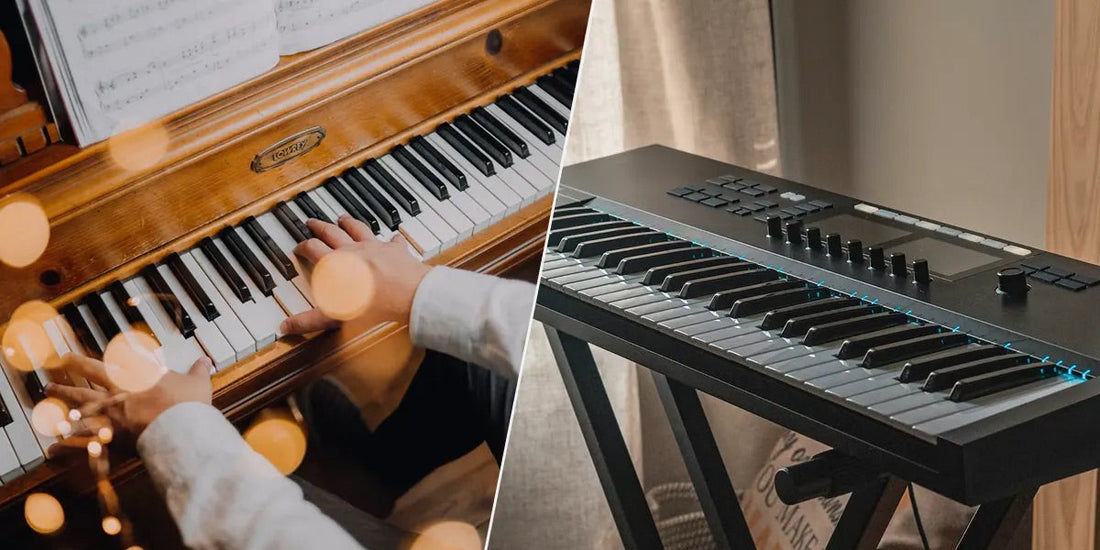Fundamentally, the piano and keyboard are similar instruments. Both involve the same notes, hand positions, and music theory. However, they are different enough in feel, sound, and long-term potential to influence how and what you learn. For some, the rich, acoustic sound and weighted keys of a traditional piano are inspiring. For others, the versatility and modern features of a keyboard—including hundreds of sounds, portability, and built-in learning tools—make it a more practical and exciting choice.
Ultimately, it’s less about which is harder to learn, and more about what kind of musical experience you’re looking for. Do you want the expressive power of an acoustic instrument, or the flexibility to explore sounds from synths to drum beats?
Piano vs Keyboard
| Feature |
Acoustic Piano |
Digital Keyboard |
|---|---|---|
| Keys | 88 fully weighted, hammer action | Usually 61–88 keys, often semi-weighted or unweighted |
| Touch Sensitivity | Natural and dynamic | Varies by model |
| Portability | Heavy, not portable | Lightweight, portable |
| Maintenance | Requires tuning | No tuning required |
| Sound | Natural acoustic sound | Digital samples (can mimic many sounds) |
| Pedals | Typically has all 3 (damper, sostenuto, soft) | Often only 1 or none, unless added |
| Price | Expensive (especially uprights/grands) | Wide range, more affordable option |
1. Touch and Feel
One of the first differences you’ll notice is in the keys. Acoustic pianos have fully weighted, hammer-action keys that respond to how hard you press—just like the strings and hammers inside the instrument. This helps develop proper technique, finger strength, and dynamic control from day one.
Keyboards, especially entry-level models, may have semi-weighted or even unweighted keys. While these are easier to press (and often better for young learners), they don’t offer the same level of resistance or dynamic expression. That said, many mid- and high-end digital keyboards now offer graded hammer action to simulate the real piano feel.
2. Sound
The piano has one iconic sound: an expressive, resonant, and beautifully complex tone created by real strings and hammers. That natural sound is hard to match digitally, especially in how it reacts to subtle differences in playing.
Keyboards, on the other hand, can offer hundreds of built-in sounds—pianos, electric pianos, organs, synths, strings, drums, and more. For some learners and composers, this variety unlocks creativity. For others focused on classical training, the realism of a single great piano sound is more important.
3. Learning Curve
- The basic principles of learning are the same for both. You'll study:
- Notes and hand positioning
- Reading music (treble and bass clef)
- Rhythm and timing
- Scales and chords
- Hand coordination
However, the piano’s heavier action and fixed acoustic tone demand stronger technique early on, which can be more challenging—but beneficial long-term. Keyboards can feel easier to start with because of lighter keys and digital features like:
- Built-in metronomes
- Light-up keys
- Playback and accompaniment tracks
- Integrated lesson modes
These features can help beginners stay engaged and track their progress more easily.
4. Portability and Space
Pianos especially upright and grand pianos are large, heavy, and require a dedicated space in your home. They also need regular tuning by a professional.
Keyboards, however, are compact and portable. Some models are light enough to carry to lessons, gigs, or move between rooms. They don’t need tuning and can be played silently with headphones ideal for shared spaces or late-night practice.
5. Long-Term Considerations
If you’re aiming to:
- Take classical exams (like ABRSM or Trinity)
- Play professionally in acoustic settings
- Build strong technique and dynamic control
Then learning on an acoustic or high-end digital piano is ideal.
If you’re more interested in:
- Music production or composing
- Playing a variety of modern genres
- Portability and flexible features
Then a keyboard might be the better choice.

